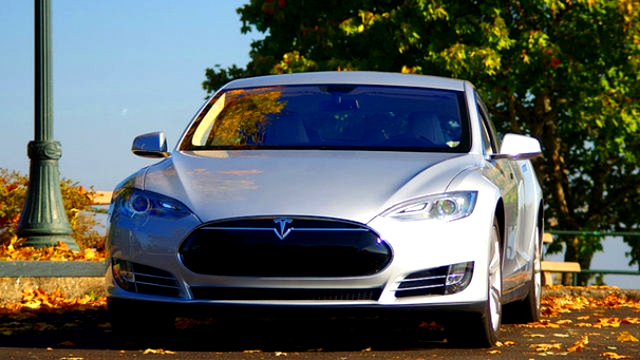
The number of people living in cities is expected to double by 2050, meaning congestion and pollution will increasingly be a problem for city dwellers. As a result the cities of the future will demand smarter traffic management solutions and more intelligent vehicles.
Experts say that car industry will develop more in the next decade than it has in the last fifty years due to the rise in connectivity and mobile technology. The industry is gearing itself up for the age of the 'connected car' but how will this manifest itself? What will cars look like five, ten even twenty years from now?
Ultimately our vehicles will be transformed into a 'super computer' on wheels, housing huge amounts of data to enable safer and more efficient driving practices. But this transformation also leaves it open to the same vulnerabilities as our consumer devices including hackers and viruses. Overcoming these obstacles will be critical to the success of connected vehicles. Lars Reger of NXP Semiconductors outlines the vision of the connected car and how they will be protected from threats.
Five years from now
By 2020 the connected car will be an everyday reality, enabling a new world of new possibilities for drivers. In five years' time, you will be able to drop your car off at the garage for a service and monitor its progress from the office, hand over control to the car in a traffic jam or benefit from next generation connected infotainment services.
The next five years will see the roll out of Vehicle-to-Vehicle (V2V) and Vehicle-to-Infrastructure (V2I) Communication networks. These networks transform the car from a mechanical device into an intelligent transport system capable of communicating with other vehicles and infrastructure.
NXP, together with Delphi has developed a platform that allows alerts to be delivered to vehicles from other cars and surrounding infrastructure, such as traffic lights and signage to alert drivers about potentially hazardous traffic situations even beyond the line of sight. This platform could be seen on the road in as little as two years' time.
The success of V2X and V2I will largely depend on manufacturers' ability to convince consumers and governments that the technology is safe. Open networks are ripe targets for abuse from hackers. For example false messages and signals sent to cars or traffic lights, could cause havoc and endanger other road users. It's therefore vital that the right levels of authentication and approval are put in place so that the source of communication can always be verified.
But these security measures do not need to be created from scratch. By introducing existing 'banking level' security to the car at a chip level, similar to what we see today in ATM cards, digital IDs and passports, into the car malicious elements can be blocked and vital systems protected.
Ten years from now
The rise in urban living will mean car ownership will become less appealing to drivers. Car sharing fleets like ZipCar will be much more common by 2025. We could therefore see digital driving licences held on our mobile phone, together with a subscription to a Car2Go service. Users will be able to book a car, will receive the booking details on their smart phone and then use Near-field-communication (NFC) to access it.
NFC will also be used to personalize car settings; your favorite radio station, preferred temperature and seat position will all be stored on your mobile device. By touching your phone to a sensor pad on the car, it will adjust instantly. While these concepts might sound futuristic all the required technology already exists. In Germany, smart licences have been introduced and can be used to access Car2Go vehicles. NFC enabled stickers have also been developed for use with paper licences.
Data protection will be of paramount importance as car-sharing companies will need to hold a lot of personal data to allow the user to access, personalize and activate the car. Again, to ensure these details are kept safe from threats we need to take the lessons learned from other areas of enterprise and cloud security and apply them directly to the car.
Twenty years from now?
Twenty years from now interaction between drivers and their cars will be entirely different. Voice recognition systems will be used by everyone and the car will act as a co-driver or driver. Younger generations will have grown up with totally different in-car technology and will view the car, not as something to be driven, but as something to drive with.
By this stage cars will probably be more intelligent than the driver when it comes to the environment around them. The car's intelligent system will know how best to avoid traffic jams, will know the best routes to get to certain places and will be able to respond to hazards far more quickly and effectively than the average driver. Many may prefer the car to do all the driving. This will reduce accidents caused by human error and will hugely increase mobility for the elderly and disabled.
In order for self-driving to become a reality, legislation will also form a core element of ensuring consistent security. Both consumers and governments need to be convinced of the various industry groups, such as the Car 2 Car Consortium, are already collaborating to put these standards in place.
Once the hurdles surrounding security and legislation have been overcome, which I am confident they will be, the future of the connected car looks very promising indeed.
Lars Reger is vice president of strategy, new business and R&D for the Automotive business unit at NXP
Published under license from ITProPortal.com, a Net Communities Ltd Publication. All rights reserved.

